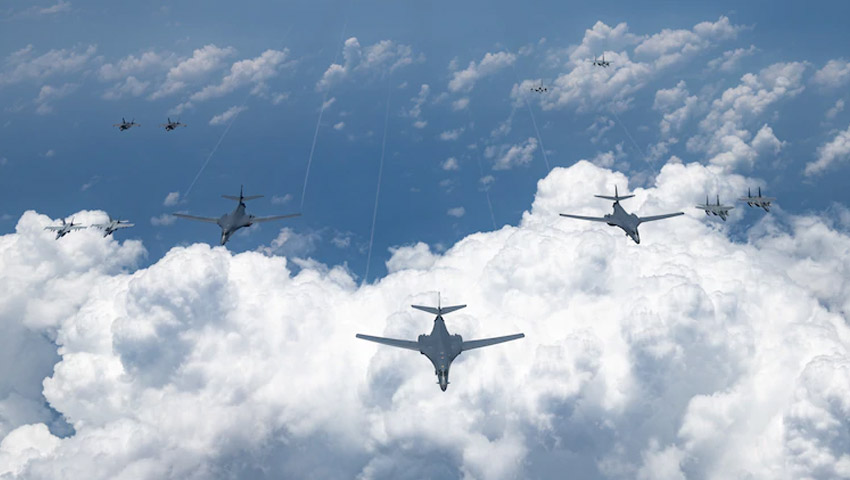Bomber and fighter aircrew assigned and deployed to Pacific Air Forces launched four B-1B Lancers, two B-2 Spirit Stealth Bombers and four F-15C Eagles as they conducted Bomber Task Force missions simultaneously with joint and allied partners within the Indo-Pacific region over the course of 24 hours.
To continue reading the rest of this article, please log in.
Create free account to get unlimited news articles and more!
PACAF routinely conducts BTF operations to show the US commitment to allies and partners in the Indo-Pacific area of responsibility.
The first display of airpower came when two B-1s from Ellsworth Air Force Base, South Dakota, took off from Ellsworth AFB and flew to the East Sea. Once there, they integrated with the Koku Jieitai, or Japan Air Self-Defense Force, and further strengthened relationships by training together.
General Ken Wilsbach explained, “Our unique strength as an Air Force is our ability to generate integrated actions with our joint teammates and allies and partners to challenge competitors in a time and place of our choosing.”
While the two “Bones” were en route to the East Sea, another set of two B-1s took off from Andersen Air Force Base, Guam.
“Training in a complex situation like this large force employment improves not only tactical skills, but also interoperability and mutual trust,” Gen Wilsbach explained.
In addition to the two sets of bomber missions, four F-15C Eagles from Kadena Air Base, Japan, also made their way to the East Sea to integrate with the four B-1s, the US Navy’s USS Ronald Reagan Carrier Strike Group, F-35 Lightning IIs assigned to Marine Corps Air Station Iwakuni, Japan, and F-15J aircraft from the JASDF to conduct large force exercise training.
US Navy Rear Admiral George Wikoff, Ronald Reagan Carrier Strike Group commander, explained, “High end, integrated training with our Air Force peers enhances our capability to respond to any contingency, and meet any challenge. US joint integration demonstrates our unwavering commitment to regional defence agreements with our allies and partners.”
Upon completion of integration and training, the fighters returned to Kadena AB while the four B-1s returned to their home station in South Dakota.
Finally, while integration and training were happening in the East Sea, two B-2 Spirit bombers from Whiteman Air Force Base, Missouri, currently deployed to Naval Support Facility Diego Garcia delivered their own unique capabilities in the theatre.
In the Indian Ocean, the B-2s conducted joint interoperability tactics training before returning to Diego Garcia.
These missions show the ability of Air Force Global Strike Command to deliver lethal, ready, long-range strike options to geographic combatant commanders anytime, anywhere.
Stephen Kuper
Steve has an extensive career across government, defence industry and advocacy, having previously worked for cabinet ministers at both Federal and State levels.

 Login
Login








